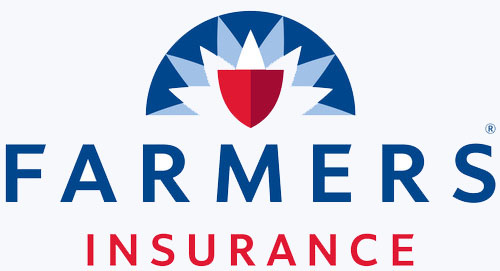Home Insurance
Your home will be one of the most significant investments you will ever make, both economically and emotionally so you want to protect it.
What You Need To Know
The Structure
Rebuild, replacement and more
You need enough insurance to cover the cost of rebuilding your home at current construction costs. Don’t include the cost of the land. And don’t base your rebuilding costs on the price you paid for your home. The cost of rebuilding could be more or less than the price you paid or could sell it for today.
For a quick estimate of the amount of insurance you need, multiply the total square footage of your home by local building costs per square foot. To find out construction costs in your community, call your local real estate agent, builders association or insurance agent.
COST FACTORS FOR REBUILDING
- Local construction costs
- The square footage of the structure
- The type of exterior wall construction–frame, masonry (brick or stone) or veneer
- The style of the house (ranch, colonial)
- The number of bathrooms and other rooms
- The type of roof and materials used
- Other structures on the premises such as garages, sheds
- Fireplaces, exterior trim and other special features like arched windows
- Whether the house or parts of it like the kitchen was custom built
- Improvement to your home–adding a second bathroom, enlarging the kitchen or other additions that have added value to your home
REPLACEMENT COST POLICIES
Most policies cover replacement cost for damage to the structure. A replacement cost policy pays for the repair or replacement of damaged property with materials of similar kind and quality. There is no deduction for depreciation–the decrease in value due to age, wear and tear, and other factors. If you purchase a flood insurance policy, coverage for the structure is available on a replacement cost basis.
GUARANTEED OR EXTENDED REPLACEMENT COST COVERAGE
After a major hurricane or a tornado, building materials and construction workers are often in great demand. This can push rebuilding costs above homeowners policy limits, leaving you without enough money to cover the bill. To protect against such a situation, you can buy a policy that pays more than the policy limits.
An extended replacement cost policy will pay an extra 20 percent or more above the limits, depending on the insurance company. A guaranteed replacement cost policy will pay whatever it costs to rebuild your home as it was before the fire or another disaster.
Additional Information
Building codes, inflation, floaters and more
BUILDING CODES
Building codes are updated periodically and may have changed significantly since your home was built. If your home is badly damaged, you may be required to rebuild your home to meet new building codes. Generally, homeowners insurance policies (even a guaranteed replacement cost policy) won’t pay for the extra expense of rebuilding to code. We offer an Ordinance or Law endorsement that pays a specified amount toward these costs.
INFLATION GUARD
Consider adding an inflation guard clause to your policy. This automatically adjusts the dwelling limit when you renew your policy to reflect current construction costs in your area.
OLDER HOMES
If you own an older home, you may not be able to buy a replacement cost policy. Instead, you may have to buy a modified replacement cost policy. This means that instead of repairing or replacing features typical of older homes, like plaster walls and wooden floors, with similar materials, the policy will pay for repairs using the standard building materials and construction techniques in use today.
PERSONAL POSSESSIONS
Most homeowners insurance policies provide coverage for your personal possessions for approximately 50 percent to 70 percent of the amount of insurance you have on the structure or “dwelling” of your home. The limits of the policy typically appear on the Declarations Page under Section I, Coverages, A. Dwelling. To determine if this is enough coverage, you need to conduct a home inventory. This is a detailed list of everything you own and information related to the cost to replace these items if they were stolen or destroyed by a disaster such as a fire
FLOATERS/ENDORSEMENTS FOR EXPENSIVE ITEMS
There may be limits on how much coverage you get for expensive items such as jewelry, silverware and furs. Generally, there is a limit on jewelry for $1,000 to $2,000. You should ask your agent or look it up in your policy. This information is in Section I, Personal Property, Special Limits of Liability. Insurance companies may also place a limit on what they will pay for computers.
If the limits are too low, consider buying a special personal property floater or an endorsement. These allow you to insure these items individually or as a collection. With floaters and endorsements, there is no deductible. You are charged a premium based on what the item (or collection) is, its dollar value and where you live.
ADDITIONAL LIVING EXPENSES AFTER A DISASTER
This is a very important feature of a standard homeowners insurance policy. This pays the additional costs of temporarily living away from your home if you can’t live in it due to a fire, severe storm or other insured disaster. It covers hotel bills, restaurant meals and other living expenses incurred while your home is being rebuilt.
Coverage for additional living expenses differs from company to company. Many policies provide coverage for about 20% of the insurance on your house. Some companies will even sell you a policy that provides you with an unlimited amount of loss of use coverage, for a limited amount of time.
LIABILITY TO OTHERS
This part of your policy covers you against lawsuits for bodily injury or property damage that you or family members cause to other people. It also pays for bodily injury and property damage to others caused by pets. It pays for both the cost of defending you in court and for any damages a court rules you must pay.
Generally, most homeowners insurance policies provide a minimum of $100,000 worth of liability insurance, but higher amounts are available. Increasingly, it is recommended that homeowners consider purchasing at least $300,000 to $500,000 worth of coverage of liability protection.





